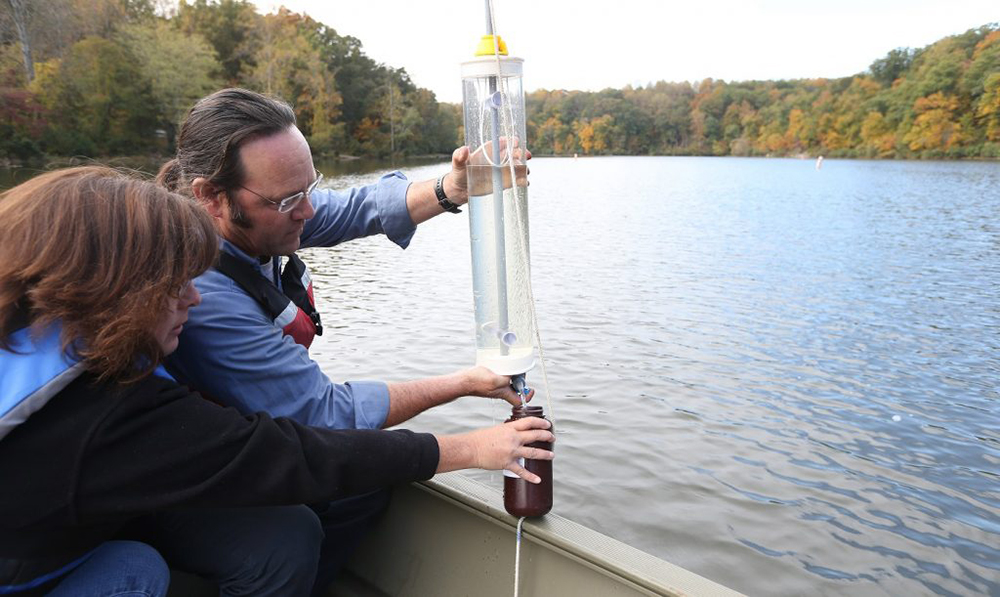
Andrea Terry and Konrad Zeller conducting water sampling. Photo/Andrew Shurtleff
Algae Growth: An Emerging Issue
In recent years, algae growth and algal blooms have impacted waters across many parts of the United States, including raw water sources for drinking use. The result of natural-occurring processes, excessive nutrients and warm temperatures, harmful algal blooms have created concerns about water quality, human and ecological health, and recreational activities.
As a utility we share concern about algae and therefore have created a rigorous program to monitor, manage, and treat algae at the reservoir before they become a problem in the treatment process. Using our data, we are able to respond in real time and stay ahead of the harmful algae. We have shared this program at national and regional industry conferences, like AWWA’s national conference in Chicago and its Virginia Chapter “Water JAM” conference. And we will continue to further refine the program as we learn more.
DiNatale Reservoir Study
Furthermore, in 2014 we enlisted the help of leading experts in the U.S. on lakes/reservoirs, DiNatale Water Consultants, to take an in-depth look at our reservoirs so that we can learn more about how each of our reservoirs behave and explore alternatives in managing our reservoirs.
Our Reservoir Water Quality and Management Study “A First Look” summary pamphlet has been published and a full copy of the preliminary findings in the study can be found here in pdf.
Rivanna’s Algal Monitoring Program
Our current Algal Monitoring Program is designed to reduce the likelihood and magnitude of algal blooms which could result in cyanotoxins (the toxins various species of algae sometimes produce) and related taste and odor issues. If blooms occur, we proactively manage our water resources before it gets a chance to reach our treatment facility.
Rivanna Water and Sewer Authority is among the leading water utilities when it comes to managing harmful algae. Rather than taking a one-size-fits-all approach, we use an adaptive management approach, which takes into consideration the unique characteristics of each of our water supply reservoirs. Using our water quality data, we can respond in real time to stay ahead of the harmful algae.
Our program has three major components:
1. Monitor – We regularly sample the reservoirs and have the water analyzed for the quality and type of algae.
2. Evaluate – We then evaluate whether to take action based on the algae data.
3. Manage – When needed, we utilize a proactive in-lake treatment strategy to minimize algae before they enter the plant; we vary our in-take selection location and can implement additional control measures at the water treatment facility.
Our Commitment
Our ongoing commitment is to continue monitoring long-term so we can evaluate trends. We are looking forward to the recommendations from DiNatale Water Consultants that will be published in 2018. We may look at future capital improvement projects if necessary.
In the meantime, we continue to share information with non-profits like the Rivanna Conservation Alliance and government agencies like Thomas Jefferson Soil and Water Conservation District in support of their watershed improvement efforts and water quality education programs.
Additional Resources
Reservoir Water Quality and Management Study: “A First Look”
EPA Drinking Water Guidelines and Recommendations
Virginia DEQ HAB (harmful algal bloom) Hotline: 1-888-238-6154

